Porc-épic d'Amérique, Erethizon dorsatum
- Par pisteur
- Le 02/04/2025
- Dans Traces pour référence /Tracks for Reference
North American Porcupine
En empruntant la route de Fish Lake (Yukon, Canada), j'ai repéré un arbre dont l'écorce semblait avoir été rongée jusqu'à une bonne hauteur. La recherche d'indices au pied de l'arbre s'est finalement terminée à l'entrée d'une canalisation s'étendant la route où se cachait une porc-épic. Voici quelques photos des indices laissés par le rongeur :
While driving along the Fish Lake Road in Yukon, Canada, I noticed a tree with its bark gnawed up quite high. Investigating further led me to a drainpipe beneath the road where a porcupine was hiding. Here are a few photos of the signs left by the rodent :
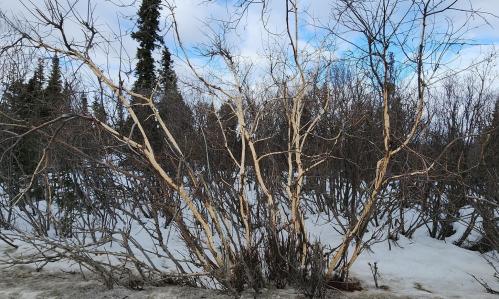

Les porcs-épics sont d'habiles grimpeurs et peuvent être souvent trouvés dans les arbres où ils se reposent,
mangent l'écorce, ou pour échapper à un potentiel prédateur
(en l'occurrence moi pour cette photo)
Porcupines are skilled climbers and can often be found in trees,
where they den, feed on bark, or to escape a potential predator
(in this case, me for this photo)
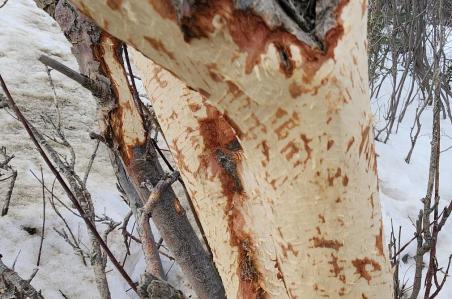 La couleur claire des parties entaillées indique une consommation récente
La couleur claire des parties entaillées indique une consommation récente
The light color of the gnawed areas indicates recent consumption.
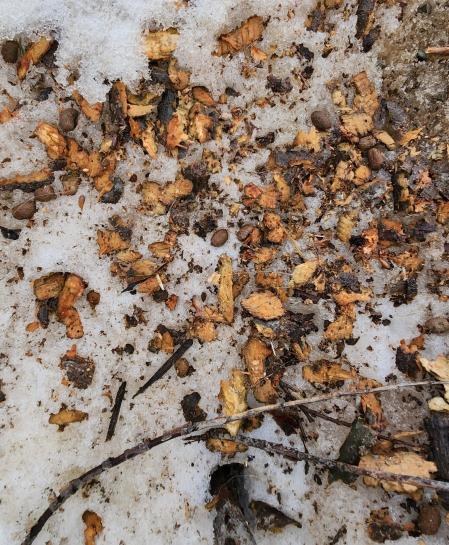 Copaux produits lors de l'écorçage
Copaux produits lors de l'écorçage
Wood chips produced during debarking
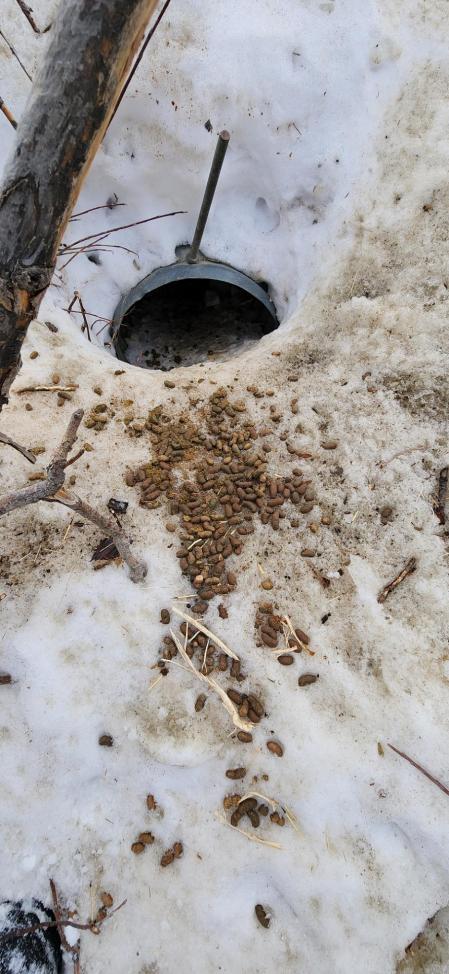
L'accès à la canalisation marquée par un tapis de crottes.
Entrance to the drainpipe with a pile of scats leading up to it
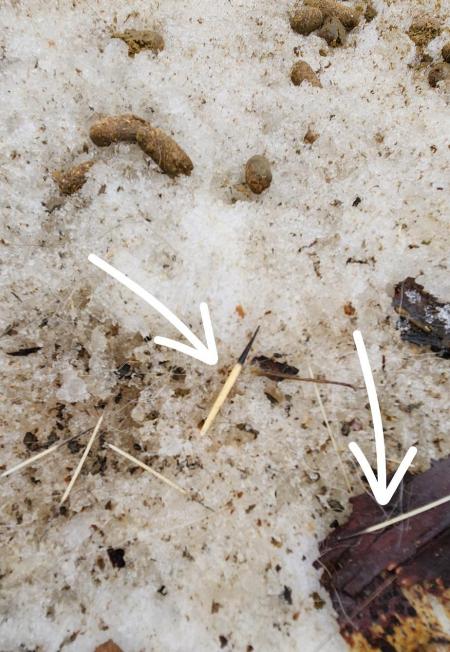 Quelques piquants perdus par l'animal en grimpant.
Quelques piquants perdus par l'animal en grimpant.
Some quills lost by the animal while climbing.
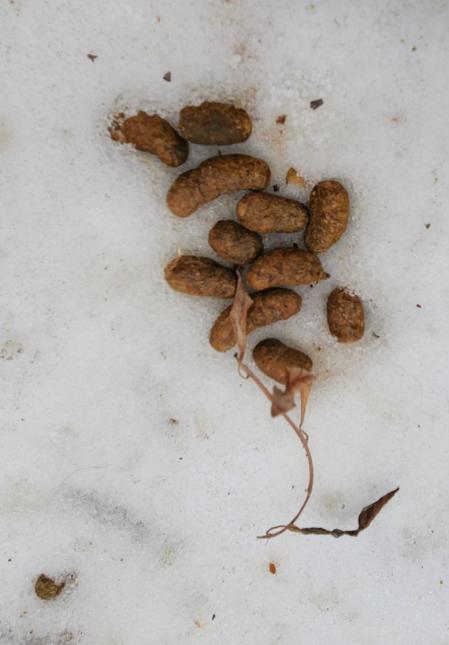 Les crottes du rongeur
Les crottes du rongeur
3 cm x 1 cm
The rodent scats
3 cm x 1 cm (1.2 x 0.4 in.)
